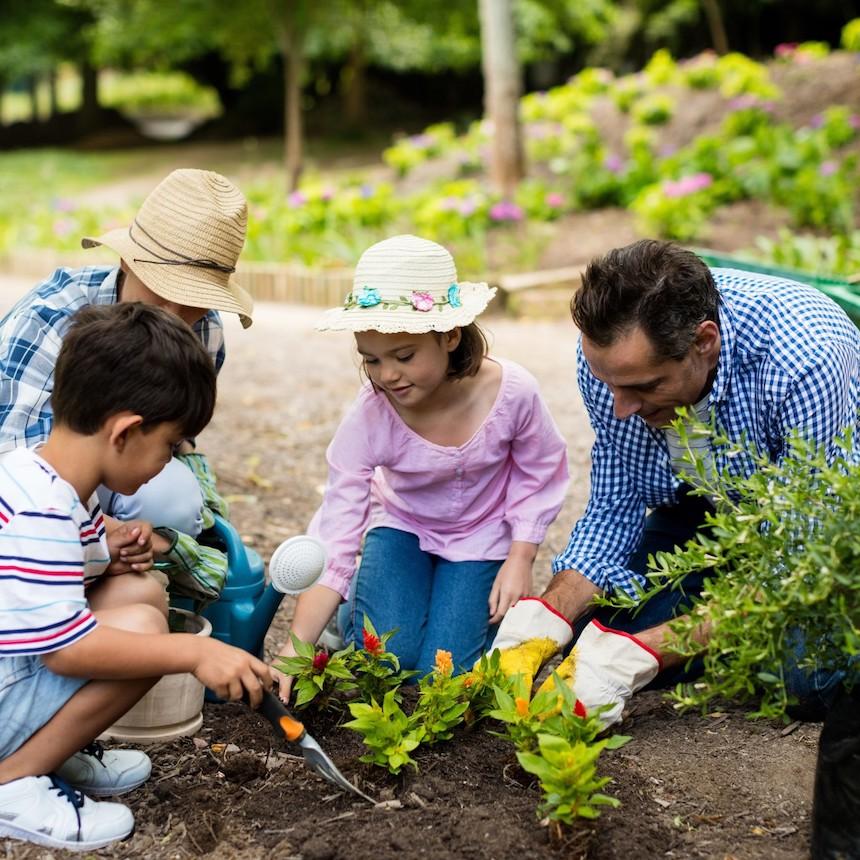Gardening Tips to Increase Your Curb Charm and Area Charm
Gardening Tips to Increase Your Curb Charm and Area Charm
Blog Article
Expert Gardening Tips for Producing a Sustainable and Eco-Friendly Yard
Embarking on the journey to produce a sustainable and green yard includes a series of calculated options and methods that not just improve the charm of your area yet additionally add positively to the atmosphere. To uncover even more skilled understandings and practical techniques, let us discover the crucial components that specify an environmentally aware yard.
Select Indigenous Plants
Picking native plants for your garden is a fundamental action towards achieving sustainability. In addition, native plants normally call for less water when established, contributing to more reliable water usage.
Past their sensible advantages, indigenous plants play an important duty in sustaining neighborhood biodiversity. They provide essential habitat and food sources for indigenous wild animals, including pollinators such as birds, bees, and butterflies. This fosters a well balanced ecosystem, which is vital for the health and wellness of your yard and the surrounding atmosphere.

Implement Water Conservation
Applying water preservation methods is necessary for preserving a sustainable yard. Reliable water use not just reduces the environmental impact but likewise makes certain that plants obtain ample hydration without wastefulness. One effective approach is to utilize drip irrigation systems, which supply water directly to the plant origins, minimizing dissipation and overflow. This targeted technique can substantially reduce water use compared to conventional sprinklers.
In addition, mulching is a valuable practice for saving water. By applying a layer of natural mulch, such as timber chips or straw, around the base of plants, garden enthusiasts can lessen soil dissipation and keep constant wetness degrees. Compost additionally assists control dirt temperature level and subdues weed growth, more contributing to plant health.
Rain harvesting is an additional lasting method. Installing rain barrels or various other collection systems allows gardeners to keep and record rain, which can later be utilized during completely dry durations. This not just saves metropolitan water however additionally supplies an all-natural, chemical-free source for watering.
Last but not least, selecting drought-tolerant plant types can substantially decrease water needs. These plants are adapted to grow in low-water problems, making them optimal for green yards. gardening tips. Applying these water conservation approaches will certainly cultivate a durable, sustainable yard
Usage Organic Gardening Techniques

Pest administration in an organic garden relies upon integrated bug administration (IPM) methods. These include motivating advantageous pests, using all-natural predators like ladybugs and lacewings, and carrying out plant turning to disrupt pest life cycles. Companion planting, where particular plants are expanded together to fend off insects or attract beneficial insects, is an additional reliable method.
Weed control is handled via mulching and hands-on elimination, instead of depending on herbicides. Mulch not only suppresses weeds but likewise preserves dampness and enhances soil health as it breaks down. Organic composts, such as straw, timber chips, and leaves, are especially advantageous.
Produce Wild Animals Environments
Developing wildlife environments within your yard not only enhances biodiversity yet additionally sustains the ecological community's balance. Deliberately rooms that draw in resource and maintain local fauna, you can produce a flourishing micro-ecosystem that benefits both plants and animals. Start by integrating native plants, as these are fit to your regional climate and give essential food and sanctuary for wildlife. Indigenous vegetation sustains a series of pests, birds, and small animals, adding to the ecological network.
Take into consideration adding a water function, such as a fish pond or birdbath, to provide a consistent water resource. Water click to investigate components draw in a selection of species, from amphibians to pollinators, improving the yard's vitality. Furthermore, setting up birdhouses, bat boxes, and insect hotels uses secure nesting websites and encourages biodiversity.
Leave some locations of your garden uninterrupted, allowing fallen leave trash and fallen branches to accumulate. By focusing on these sustainable techniques, your yard can end up being a shelter for neighborhood wild animals, advertising eco-friendly health and sustainability.
Method Composting and Mulching
A vital aspect of lasting horticulture, composting and mulching, considerably enhances dirt wellness and reduces waste. Composting involves recycling natural products such as cooking area scraps, turf trimmings, and leaves. These products decay to form nutrient-rich compost, which works as an all-natural fertilizer. Unlike artificial plant foods, compost enriches the dirt with crucial nutrients and advantageous bacteria, fostering a healthier garden environment.
Mulching, on the various other hand, includes covering the dirt surface area with organic or inorganic products, such as straw, wood chips, or shredded fallen leaves. This practice offers numerous advantages: it preserves soil dampness, suppresses weed growth, and moderates soil temperature. Compost additionally gradually breaks down, adding organic issue to the dirt and more improving its fertility.
To practice effective composting, ensure your compost heap has a balance of site here eco-friendly materials (rich in nitrogen) and brown products (rich in carbon), preserving adequate aeration and moisture. gardening tips. Regularly turning the stack increases disintegration. For mulching, apply a 2-3 inch layer around plants, guaranteeing it does not straight get in touch with stems or trunks to stop rot
Conclusion

Choosing indigenous plants for your yard is a basic action towards achieving sustainability.In addition, including indigenous plants can improve the aesthetic allure of your garden. These plants are adapted to prosper in low-water conditions, making them optimal for green gardens. Executing these water preservation techniques will cultivate a resilient, sustainable garden.
In verdict, establishing a lasting and green garden involves the tactical option of native plants, the adoption of water conservation methods, and the execution of natural horticulture approaches.
Report this page